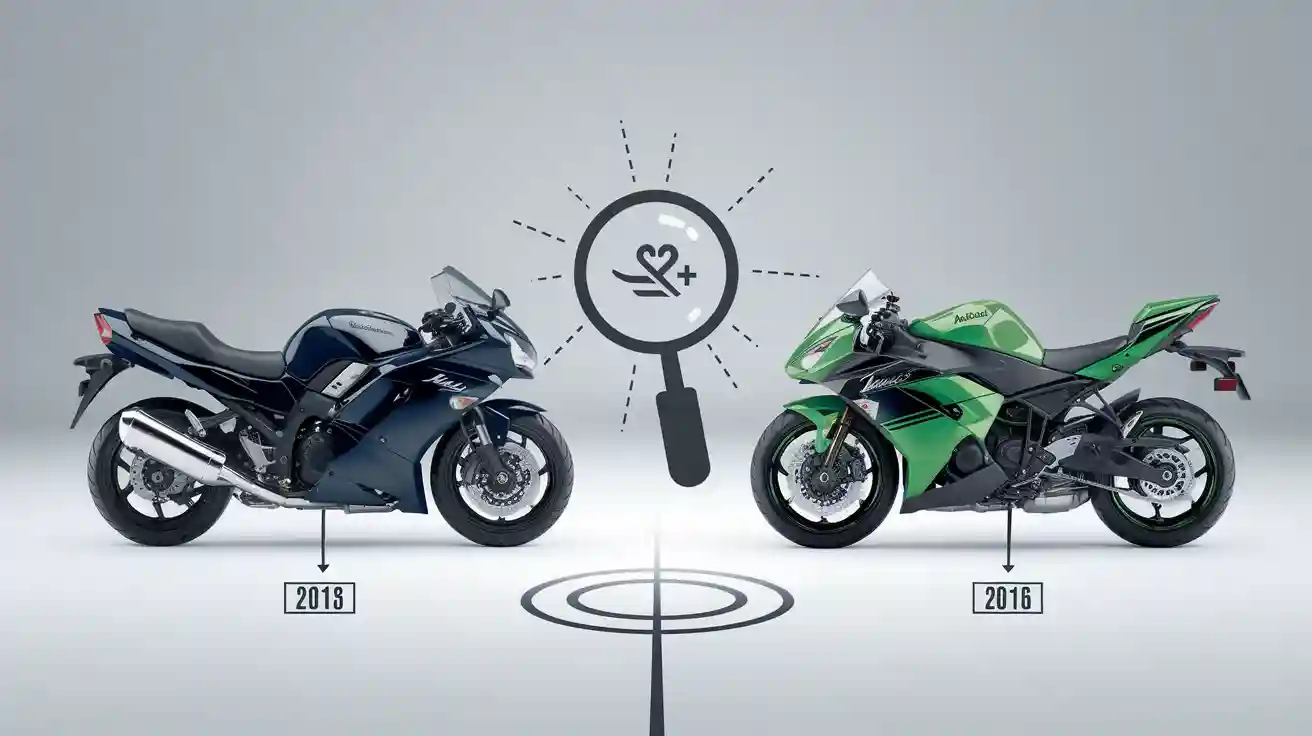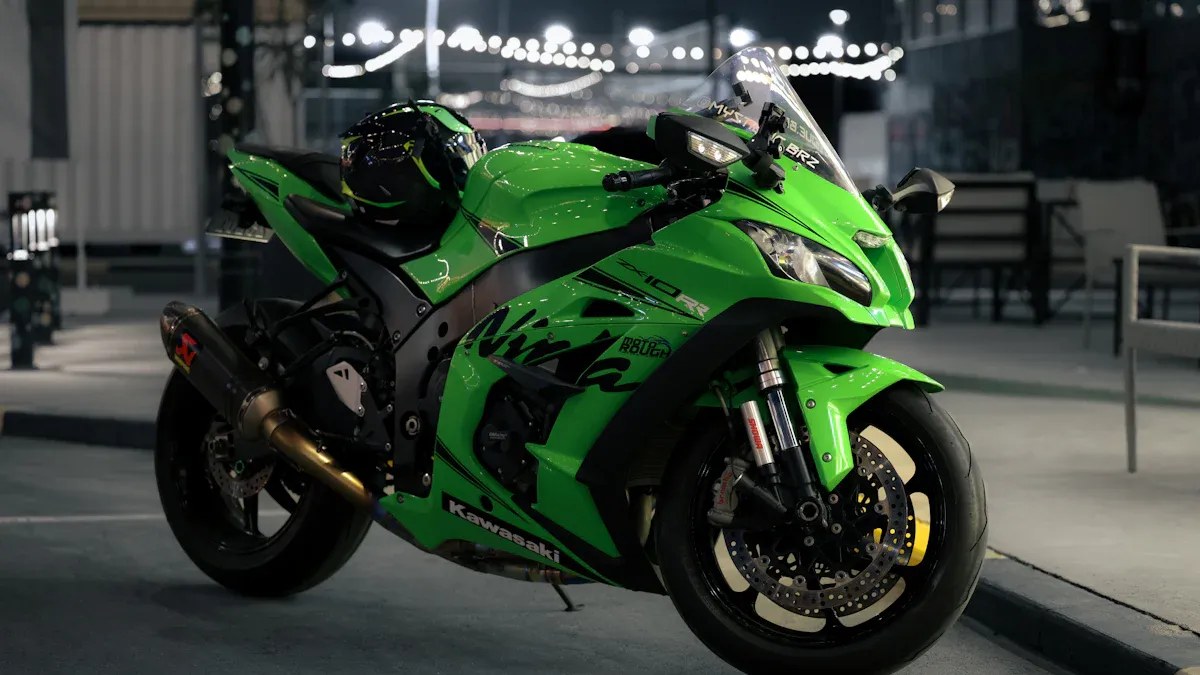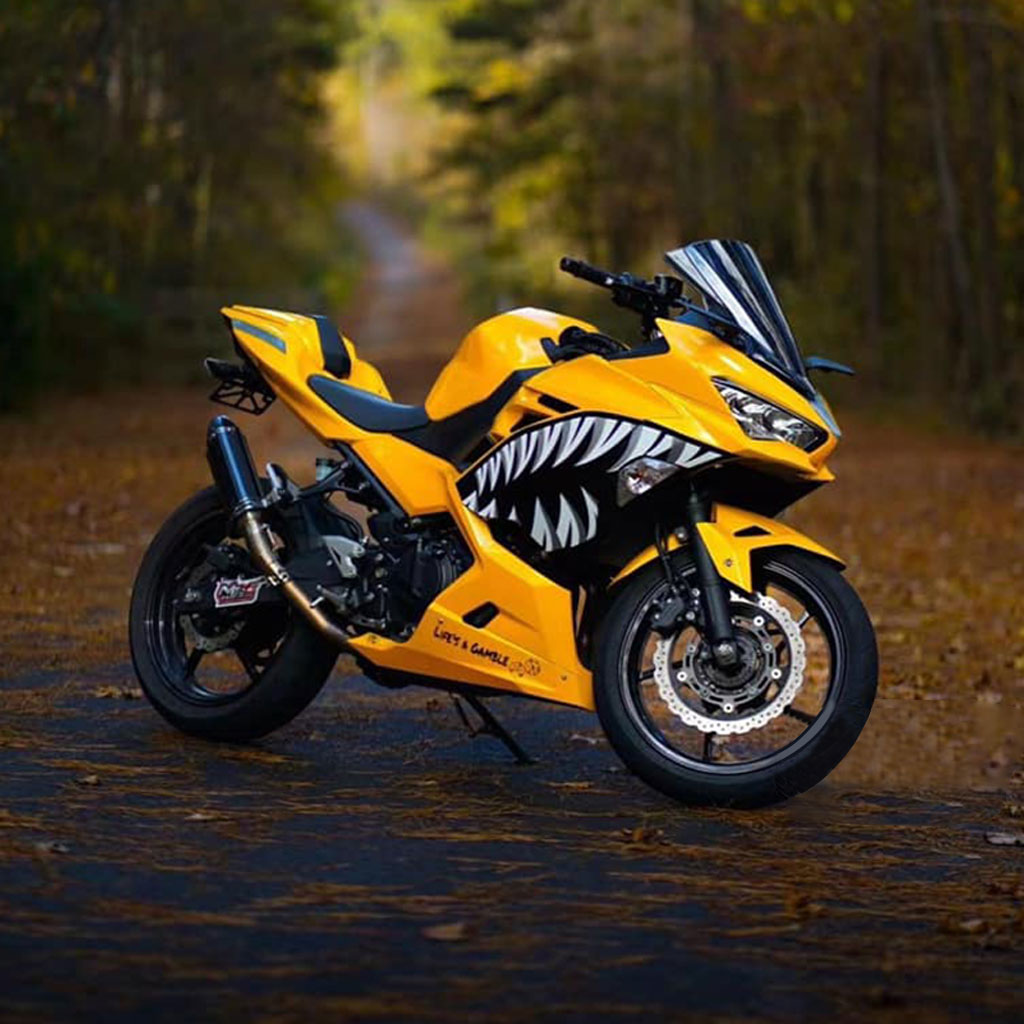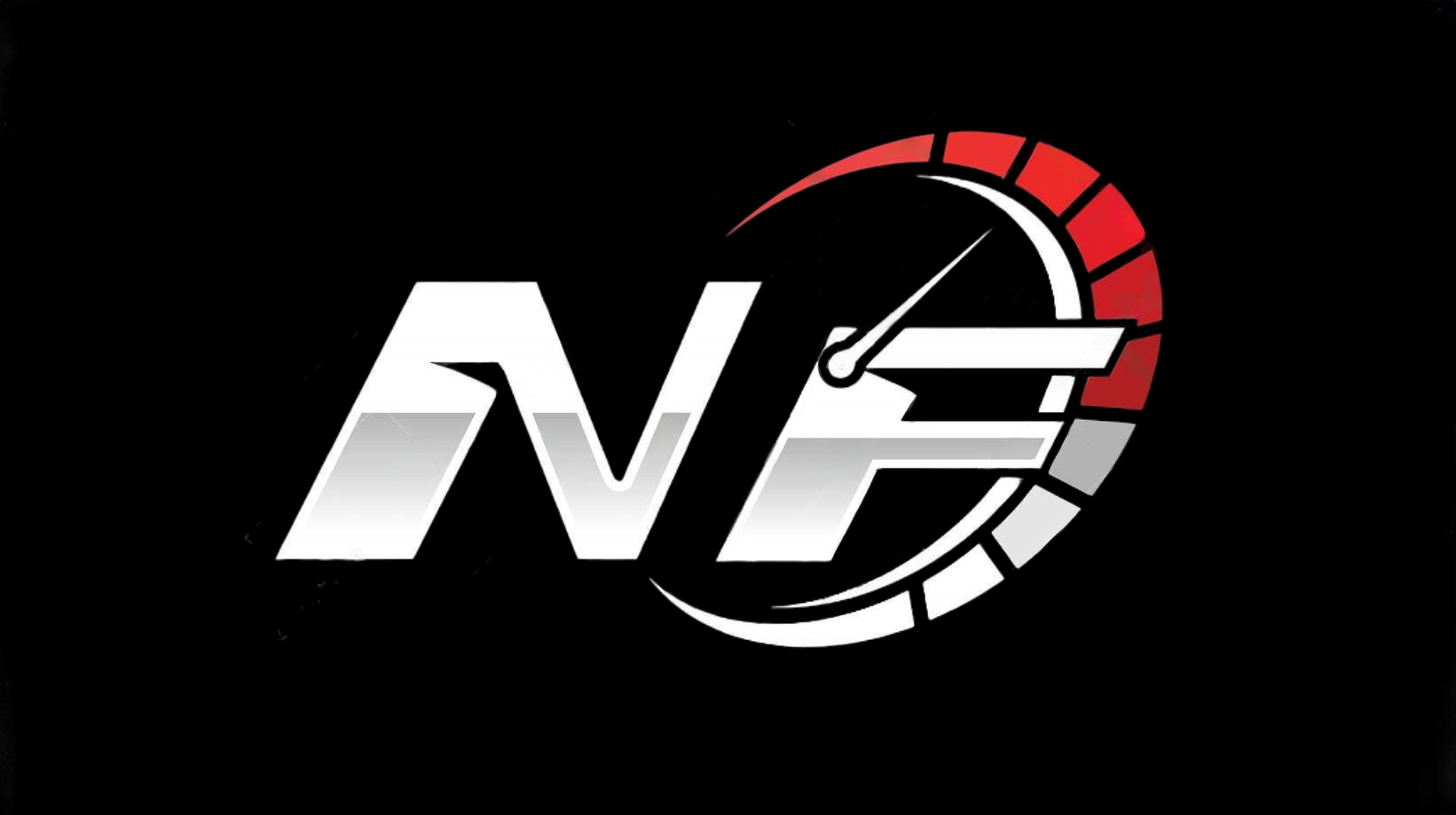Surprising Truths About 2013 Ninja EX650 and 2016 Models

Many riders wonder if moving from the 2013 ninja ex650 to the 2016 kawasaki ninja 650 brings real value. The kawasaki ninja series often promises better performance with each new model. Some riders expect big changes, but the 2016 kawasaki ninja 650 surprises many with its updates. The motorcycle world knows the kawasaki ninja name for reliability. Riders see differences in comfort, features, and style between each kawasaki ninja 650 model. Here are some points that catch attention:
- The 2016 kawasaki ninja 650 model feels smoother on city roads.
- The 2013 ninja ex650 model holds strong value for daily riders.
- Kawasaki keeps the ninja 650 model simple but adds smart touches.
Key Differences Between 2013 Ninja EX650 and 2016 Kawasaki Ninja 650
Quick Comparison of Features
The kawasaki ninja 650 series has always attracted riders who want a balance of performance and comfort. The 2013 ninja ex650 and the 2016 kawasaki ninja 650 both belong to the middleweight class, but the 2016 model brings several updates. Riders notice changes in the way the motorcycle feels, looks, and handles. The kawasaki ninja 650 models share the same engine platform, but the 2016 model offers a lighter and more compact design.
The table below shows the main differences in weight, size, and fuel capacity between the two kawasaki ninja 650 models:
| Specification | 2016 Ninja 650 | 2013 Ninja EX650 | Difference from 2013 Model |
|---|---|---|---|
| Weight | 193 kg (approx. 425.7 pounds) | 209.0 kg (460.8 pounds) | 18 kg lighter |
| Length | 2056 mm | 2111 mm (83.1 inches) | 55 mm shorter |
| Width | 740 mm | 770 mm (30.3 inches) | 30 mm thinner |
| Height | 1136 mm | 1181 mm (46.5 inches) | 45 mm lower |
| Wheelbase | 1410 mm (same) | 1410 mm (55.5 inches) | No change |
| Seat Height | 790 mm | 805 mm (31.7 inches) | 15 mm lower |
| Fuel Capacity | Approx. 14.9 liters (3.94 US gal) | 15.90 liters (4.2 US gallons) | 1 liter less |
The updated ninja 650r feels easier to handle because of its lighter weight. Riders who switch from the 2013 ninja ex650 to the 2016 kawasaki ninja 650 notice the difference in city traffic and tight corners. The lower seat height helps shorter riders feel more confident. The kawasaki ninja 650 models keep the same wheelbase, so stability remains strong. The fuel tank on the 2016 kawasaki ninja 650 holds a bit less, but most riders find the range still works for daily use.
Note: The kawasaki ninja 650 and kawasaki er-6f share many parts, but the ninja 650 models focus more on sporty looks and rider comfort.
Cosmetic vs. Mechanical Changes
Kawasaki made both cosmetic and mechanical updates to the 2016 ninja 650. The most obvious change comes from the bodywork. The 2016 kawasaki ninja 650 gets sharper lines and a more aggressive front fairing. The paint options look brighter and more modern. Riders see a clear difference when they park the two kawasaki ninja 650 models side by side.
The mechanical changes focus on weight reduction and improved handling. Kawasaki engineers trimmed 18 kg from the 2016 model. This makes the motorcycle feel quicker and more responsive. The updated ninja 650r uses a revised frame and lighter components. The suspension tuning also feels firmer, which helps with cornering. The kawasaki ninja 650 models keep the same engine, but the 2016 version feels smoother at low speeds.
The kawasaki ninja 650 and kawasaki er-6f both use a parallel-twin engine. The 2016 model keeps the same power output as the 2013 ninja ex650, but the lighter weight gives it a slight edge in performance. Riders who try the ninja 400 notice that the ninja 650 models offer more power and stability, but the ninja 400 feels even lighter.
The kawasaki ninja 650 models also get small updates to the dash and controls. The 2016 kawasaki ninja 650 has a clearer display and better switchgear. The mirrors and levers feel more solid. These changes may seem minor, but they add up for riders who spend a lot of time on their motorcycle.
Riders who want a sportier look and sharper handling often prefer the 2016 kawasaki ninja 650. Those who value fuel range and a slightly taller seat may stick with the 2013 ninja ex650.
The kawasaki ninja 650, kawasaki er-6f, and 650r models all share a reputation for reliability. The 2016 kawasaki ninja 650 builds on this with small but important improvements. Riders who compare the ninja 400, ninja 650, and 650r models see that each kawasaki ninja model fits a different need. The 2016 kawasaki ninja 650 stands out for its lighter weight, updated style, and improved comfort.
Engine and Performance in Kawasaki Ninja 650
Engine Specifications and Output
The kawasaki ninja 650 uses a 649cc liquid-cooled parallel twin engine. This engine design gives the kawasaki ninja 650 strong mid-range power. Riders see about 70 horsepower at 7,500 rpm in the 2016 kawasaki ninja 650. The 2013 ninja ex650 offers 67 horsepower at 8,700 rpm and 45 lbs.-ft. of torque at 7,000 rpm. Both kawasaki ninja 650 models share the same engine platform, so their torque numbers stay close. The table below shows the main engine figures for both models:
| Model Year | Engine Displacement | Horsepower (bhp) | Torque (lbs.-ft.) | RPM (Horsepower) | RPM (Torque) |
|---|---|---|---|---|---|
| 2013 Ninja EX650 | 649cc | 67 | 45 | 8,700 | 7,000 |
| 2016 Ninja 650 | 649cc | 70 | ~45 | 7,500 | ~7,000 |
The kawasaki ninja 650 engine stands out for its smooth delivery and reliability. Riders who compare the kawasaki ninja 650 to the ninja 400 notice the larger engine gives more power for highway speeds. The kawasaki ninja 650 also keeps emissions low. The 2016 kawasaki ninja 650 reports CO2 emissions at 107 grams per kilometer, showing kawasaki’s focus on clean performance.
Real-World Riding Experience
Riders praise the kawasaki ninja 650 for its balanced performance. The motorcycle feels quick in city traffic and steady on highways. The kawasaki ninja 650 engine responds well at low and mid-range speeds, making it easy to ride every day. Many riders enjoy the smooth acceleration and strong passing power. The kawasaki ninja 650 also works well for longer trips, thanks to its comfortable engine character.
Fuel efficiency matters to many kawasaki ninja 650 owners. The 2013 ninja ex650 averages about 44.8 MPG in real-world use. The 2016 kawasaki ninja 650 averages 43.5 MPG, based on rider reports. Official numbers show the 2016 kawasaki ninja 650 can reach up to 53.4 MPG under ideal conditions. Riders find the kawasaki ninja 650 offers good range for both city and highway rides.
Tip: Riders who want a lighter motorcycle with strong performance often look at the ninja 400. The kawasaki ninja 650 gives more power and stability, making it a better choice for those who ride longer distances or carry a passenger.
The kawasaki ninja 650 stands out for its reliable engine and smooth performance. Riders who upgrade from the 2013 ninja ex650 to the 2016 kawasaki ninja 650 notice the improved throttle response and lighter feel. The kawasaki ninja 650 continues to set a high standard for middleweight motorcycles.
Design and Ergonomics of Kawasaki Ninja 650R

Styling and Paint Updates
Kawasaki always pays attention to the look of its motorcycles. The 2016 Kawasaki Ninja 650R stands out with sharper lines and a more modern appearance. Riders see a big difference when they compare the 2013 and 2016 models side by side. The new bodywork on the Kawasaki Ninja 650R gives it a sportier feel. Kawasaki uses bold colors and fresh graphics to make the Ninja 650R look fast even when parked. The paint on the 2016 Kawasaki Ninja 650R resists fading and scratches better than before. Many riders enjoy the new green and black color schemes that Kawasaki offers. The Ninja 650R also features a redesigned headlight and fairing. These changes help the Kawasaki Ninja 650R look more aggressive and up-to-date.
Riders often say the 2016 Kawasaki Ninja 650R looks like a bigger, more expensive sportbike.
Comfort and Rider Position
Kawasaki knows that comfort matters for daily riders. The Ninja 650R uses low-seating ergonomics to help more people reach the ground easily. The seat on the 2016 Kawasaki Ninja 650R sits lower than the one on the 2013 model. This change helps shorter riders feel more confident. Kawasaki also shapes the seat to give better support on long rides. The Ninja 650R places the handlebars higher and closer to the rider. This setup reduces strain on the wrists and back. Kawasaki designs the Ninja 650R footpegs to allow a relaxed knee angle. Many riders say the Ninja 650R feels comfortable for both city rides and longer trips. The Kawasaki Ninja 650R offers a good balance between sporty riding and daily comfort. Riders who want a motorcycle that looks sharp and feels easy to ride often choose the Ninja 650R.
Tip: The ergonomics of the Kawasaki Ninja 650R make it a smart choice for new riders and experienced commuters.
Technology and Features in 2013 Ninja EX650 vs. 2016 Model
Instrumentation and Display
The 2013 kawasaki ninja ex650 uses a traditional analog and digital display. Riders see a large analog tachometer with a digital speedometer beside it. This setup gives clear information, but the display looks basic compared to newer motorcycles. The 2016 kawasaki ninja 650 model updates the dashboard. Kawasaki adds a brighter LCD screen with a modern layout. The new display shows more information, such as fuel range, gear position, and average fuel consumption. Riders find the new kawasaki ninja 650 display easier to read in sunlight.
A quick comparison of the two models’ displays:
| Feature | 2013 Ninja EX650 | 2016 Ninja 650 |
|---|---|---|
| Tachometer | Analog | Analog |
| Speedometer | Digital | Digital |
| Gear Indicator | No | Yes |
| Fuel Range Display | No | Yes |
| Backlight | Standard | Brighter, adjustable |
Riders who want more information at a glance prefer the 2016 kawasaki ninja 650 model.
Safety and Convenience Features
Kawasaki improves safety and convenience in the 2016 kawasaki ninja 650 model. The new model uses better switchgear and brighter headlights. The mirrors on the 2016 kawasaki ninja 650 give a wider view. Kawasaki also updates the brake system for better stopping power. The 2016 kawasaki ninja 650 model offers optional ABS, which helps riders stop safely on wet roads. The 2013 kawasaki ninja ex650 does not have ABS as a standard feature.
For convenience, the 2016 kawasaki ninja 650 model includes an easier-to-use seat latch and improved storage under the seat. Riders can access the battery and tools faster. Kawasaki also makes the fuel cap easier to open. These small changes help riders enjoy daily use and longer trips.
- Key safety and convenience upgrades in the 2016 kawasaki ninja 650 model:
- Optional ABS brakes
- Brighter headlights
- Wider mirrors
- Easier seat latch
- Improved under-seat storage
Tip: Riders who value modern safety features and easy daily use often choose the 2016 kawasaki ninja 650 model for its upgrades.
Reliability and Maintenance for Kawasaki Ninja 650
Durability and Longevity
The kawasaki ninja 650 has a strong reputation for durability. Many riders report that both the 2013 and 2016 kawasaki ninja models can last for many years with regular care. The engine design focuses on reliability and steady performance. Owners often reach high mileage without major engine problems. The frame and bodywork resist rust and damage, even after years of daily use. Riders appreciate that the kawasaki ninja 650 holds up well in different weather conditions. The paint and plastics on the 2016 kawasaki ninja model show less fading and wear compared to older versions. Many riders trust the kawasaki ninja 650 for long trips because of its proven track record.
Riders often say the kawasaki ninja 650 feels solid and dependable, even after thousands of miles.
Maintenance Considerations
Routine maintenance helps the kawasaki ninja 650 keep its performance and reliability. Owners of the 2013 ninja ex650 and 2016 kawasaki ninja 650 report some common issues:
- Starting problems, such as a dead battery or faulty starter motor.
- Running issues, like the bike starting but not staying on, often caused by water in the gas tank.
- Cranking failures due to battery or starter relay faults.
- Hot start failures from radiator fan problems.
- Gear shifting trouble, sometimes from low oil or a faulty neutral sensor.
- Idling issues that affect engine performance, usually fixed by adjusting the throttle control knob.
- Stalling or turning off, often linked to clogged fuel injectors or dirty air filters.
- Unexpected battery failures from overheating or a faulty regulator.
Regular oil changes, air filter cleaning, and battery checks help prevent most of these problems. Riders should also inspect the fuel system and cooling fan to avoid hot start issues. The kawasaki ninja 650 uses simple parts, so many owners handle basic maintenance at home. This keeps costs low and ensures the motorcycle stays in top shape. Good maintenance habits help the kawasaki ninja 650 deliver strong performance year after year.
Who Should Upgrade Their 2013 Ninja EX650?
Rider Profiles That Benefit
Some riders see clear advantages in moving from the 2013 ninja ex650 to the 2016 kawasaki ninja 650 model. Riders who want a lighter motorcycle often notice the difference right away. The 2016 kawasaki ninja 650 model feels easier to handle in city traffic. Shorter riders benefit from the lower seat height. Commuters who ride every day enjoy the improved comfort and updated ergonomics. Riders who value modern features, such as a gear indicator and optional ABS, find the 2016 kawasaki ninja 650 model more appealing.
Many riders who use their kawasaki ninja 650 model for longer trips appreciate the new display and brighter headlights. The 2016 kawasaki ninja 650 model also suits those who want a fresh look and sharper styling. Riders who care about safety upgrades, like better brakes and wider mirrors, see real value in the newer model. The 2016 kawasaki ninja 650 model works well for those who want a sports-tourer that feels modern and reliable.
Tip: Riders who want the latest technology and a lighter feel often choose the 2016 kawasaki ninja 650 model.
When Keeping the 2013 Model Makes Sense
Some riders find that the 2013 ninja ex650 still meets their needs. This model offers strong value for daily use. Riders who do not need the latest features often stay happy with the 2013 ninja ex650. Taller riders may prefer the higher seat on this model. The 2013 ninja ex650 model also has a slightly larger fuel tank, which helps on longer rides.
Owners who keep up with maintenance see many years of reliable service from the 2013 ninja ex650. Riders who want to save money often keep this model, since it still delivers solid performance. The 2013 ninja ex650 model remains a smart choice for those who want a dependable kawasaki ninja motorcycle without extra cost.
Note: Riders who enjoy their current kawasaki ninja 650 model and do not need new features can confidently keep the 2013 ninja ex650.
Cost-Benefit Analysis of Upgrading to 2016 Kawasaki Ninja 650
Financial Impact and Value
Upgrading from a 2013 model to a 2016 kawasaki ninja 650 involves more than just the price of a new motorcycle. Riders must consider the resale value of their current ninja and the cost of the newer model. The 2016 kawasaki ninja 650 holds a strong place in the used market. According to J.D. Power, the average retail value for a 2016 ninja 650 is $5,350. The ABS version has an average retail value of $5,660. Kelley Blue Book lists the trade-in value for a 2016 ninja 650 in good condition at $3,550.
| Model Year | Motorcycle Model | Source | Average Retail Value | Trade-In Value | Notes |
|---|---|---|---|---|---|
| 2016 | Kawasaki Ninja 650 | J.D. Power | $5,350 | N/A | Average retail value |
| 2016 | Kawasaki Ninja 650 (ABS) | J.D. Power | $5,660 | N/A | ABS version |
| 2016 | Kawasaki Ninja 650 | Kelley Blue Book | N/A | $3,550 | Trade-in value in good condition |
| 2013 | Kawasaki Ninja EX650 | N/A | N/A | N/A | No resale value data available |
The table shows that the 2016 kawasaki ninja 650 keeps its value well. No current data exists for the 2013 ninja EX650 resale value. This makes it harder for owners of the older model to estimate trade-in or sale prices. Riders who upgrade may need to sell the 2013 model privately, often at a lower price. The cost of upgrading includes the difference between the sale price of the old ninja and the purchase price of the newer kawasaki ninja 650.
Buyers should also think about insurance rates, taxes, and possible dealer fees. The 2016 kawasaki ninja 650 may cost more to insure because of its higher value and newer features. Maintenance costs for both models stay similar, but the newer model may need fewer repairs in the first years.
Note: Riders who want to maximize value often wait for the right time to sell their old ninja. Selling during peak riding season can help get a better price.
Practical Pros and Cons
Upgrading to the 2016 kawasaki ninja 650 brings several benefits, but it also comes with some drawbacks. Riders should weigh these carefully before making a decision.
Pros of Upgrading:
- The 2016 model feels lighter and easier to handle, especially in city traffic.
- The updated kawasaki ninja 650 offers improved comfort with a lower seat and better ergonomics.
- Modern features like a gear indicator, brighter display, and optional ABS increase safety and convenience.
- The new styling gives the ninja a sharper, more modern look.
- The lighter frame and revised suspension improve overall performance and ride quality.
Cons of Upgrading:
- The cost of upgrading can be high, especially if the 2013 model has a low resale value.
- Insurance and registration fees may increase with the newer kawasaki ninja 650.
- The 2016 model has a slightly smaller fuel tank, which may reduce range for long-distance riders.
- Riders who already feel comfortable with the 2013 ninja may not notice a big difference in daily performance.
- Selling the older model may take time and effort, especially with limited resale data.
Tip: Riders should list their priorities before upgrading. Those who value new technology and improved handling may find the 2016 kawasaki ninja 650 worth the investment. Others who want to save money and already enjoy their current ninja may choose to keep the 2013 model.
The decision to upgrade depends on each rider’s needs and budget. The 2016 kawasaki ninja 650 brings real improvements in comfort, safety, and performance. However, the financial impact can be significant if the older model does not hold much value. Riders should compare the benefits of the new model with the costs involved to make the best choice.
Upgrading from the 2013 model to the 2016 model depends on each rider’s needs. The 2016 model feels lighter and offers better comfort. Riders who want new features and improved safety may prefer the newer model. The 2013 model still gives strong value for daily use. Riders should compare the cost and benefits of each model. The kawasaki ninja stays reliable in both versions. Riders who maintain their model can expect years of solid performance. Careful research helps riders choose the right model.
FAQ
What is the main difference in handling between the 2013 and 2016 Ninja 650?
The 2016 Ninja 650 feels lighter and more agile. Riders notice easier turns and better control in city traffic. The lower seat helps shorter riders feel more confident.
Does the 2016 Ninja 650 have better safety features than the 2013 model?
Yes. The 2016 Ninja 650 offers optional ABS brakes, brighter headlights, and wider mirrors. These upgrades help riders stay safer, especially in poor weather or heavy traffic.
How does fuel economy compare between the two models?
Both models offer similar fuel economy. The 2013 Ninja EX650 averages about 44.8 MPG. The 2016 Ninja 650 averages around 43.5 MPG. Most riders see little difference in daily use.
Is maintenance easier on the 2016 Ninja 650?
The 2016 Ninja 650 uses improved parts and easier access to the battery and tools. Riders find routine checks and repairs simpler. Regular maintenance keeps both models reliable for many years.
See Also
Comprehensive Analysis of Ninja 650 Kawasaki Fairing Performance
Top Six Stylish Motorcycles Perfect For New Riders 2025
Best Five Fairing Styles For Ninja 400 In 2025

